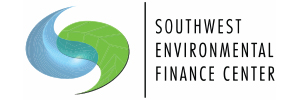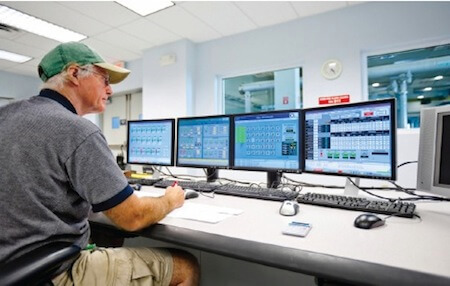Written by Hayley Hajic with consultation from Dawn Nall
In Brief
This blog post is the last part of our three part series on CMMS Software. This blog post describes how to set up a demo with CMMS questions and recommends questions to ask during the demo. It also discusses CMMS pricing and technical support.
Making contact with CMMS companies
Once you have a short list of CMMS software companies, you’ll want to call them and set up a demo. During your initial phone call describe your system and what your software needs are. The companies can then tailor the demo to focus on the features your utility is interested in. You should be aware of other available features for possible future use.
During the demo, view each feature on your list, both essential and optional. Also think about functionality and ease of use throughout the demo; does the feature seem user friendly? As each feature is shown, be sure to ask any questions you may have. For example, if preventative maintenance is on your list, make sure the software supports preventative maintenance as your utility would use it. Does the software do calendar-based preventative maintenance or is it based on hours of run time or odometer readings or a combination? Can you create corrective maintenance work orders from failed inspections? The more prepared you come to a demo, the more you will get out of it and the easier it will be to pick the right CMMS software.
API
During the calls with the CMMS companies you will likely hear the acronym API. Application programming interfaces (APIs) extend the power of your CMMS and let it talk to other computers, applications, equipment etc. Many companies may not have a specific feature as part of their software initially but can use an API to integrate that feature if necessary. For example, some CMMS software does not integrate SCADA data. However, there are companies that have the capability to use an API to integrate SCADA data into their software. Be aware that the use of an API will likely be an additional cost.
Price
Each CMMS software will have a different pricing scheme. Pricing may be available on a company’s website, but more often you will have to request a price estimate. Do this early on so you know if the software is within your budget. To receive an accurate estimate, companies will request part or all of the following information: gallons per day, number of connections and/or number of users. They may ask for the total number of users or ask for the number of concurrent users. These can all effect the price of the software. The cost of the software is usually subscription or licensed based. If it is subscription based, some companies will allow you one month free out of the year if you pick an annual subscription rather than a monthly one. The subscription or license costs will not be the only fees you pay. The questions below can help you find out about any hidden costs.
Potential questions to ask:
- How much are onboarding and training fees? These usually depend on how large the setup is, number of days someone from the company has to be at the utility etc.
- Does the license or subscription fee stay the same or increase every year?
- Is there a cost to importing and integrating data into the system?
- Is there an additional cost for technical support?
- Is there an additional cost for upgrades?
Request for Proposals
As a water utility, you may be required to write a Request for Proposal (RFP) instead of having your team select a CMMS software. It is still important to follow the steps outlined in the CMMS part 1 and part 2 blog posts because they will help you gather all the information you need to write an RFP. A well written RFP will be specific and that will ensure that only companies with software that fulfills requirements on your essential features list will submit a proposal.
Technical Support
Another vital piece to CMMS selection is understanding the company’s technical support. All companies should provide some type of technical support, but the type may depend on whether your software is cloud-based or on-premise. If the software is cloud-based, most technical problems can be solved remotely. If the software is set-up on-premise then there is a higher likelihood someone would have to travel to you to fix issues. The questions below can help you gage the level of technical support you will receive.
Potential questions to ask:
- How does technical support work? Is there around the clock support?
- Do you provide instructional videos, in-software guides, live chat?
- How are upgrades done?
Once you have talked to the top companies on your list and seen their demos, compare them. You can also go online and look at software advice websites that you can use to read company reviews. Buying the right software for your utility can be an intimidating activity, but defining your goals and knowing the right questions to ask will make you well prepared to navigate the process.
Links to Part 1 and Part 2
Part 1: http://southwestefc.unm.edu/computerized-maintenance-management-system-cmms-part-1-of-3/
Part 2: Coming Soon


Recent Comments